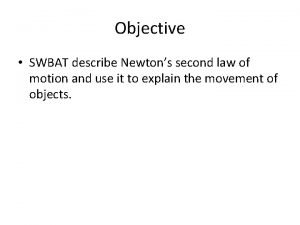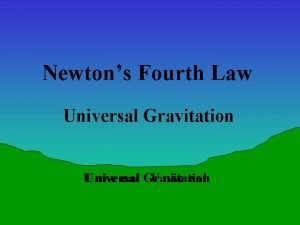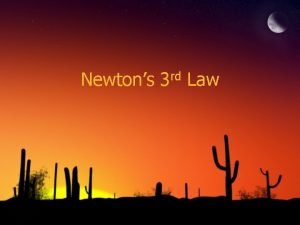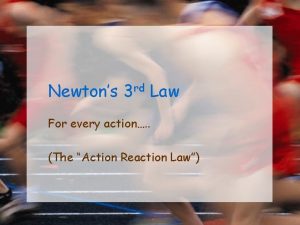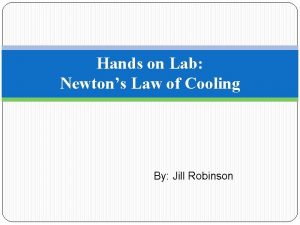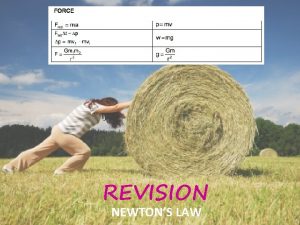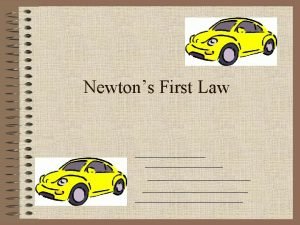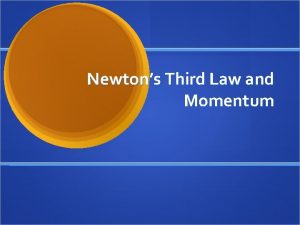Newtons I law a state each of Newtons













- Slides: 13

Newton`s I law (a) state each of Newton’s laws of motion (b) show an understanding that mass is the property of a body that resists change in motion (c) describe and use the concept of weight as the effect of a gravitational field on a mass

To do Read p 44&45 Write Newton`s 1 st law in your notes In your notes explain Why you would tend to fall over if you jumped from a moving vehicle Why a moon rock may feel about the same weight as a football but should never be kicked The difference between inertial mass and gravitational mass

(d) define linear momentum as the product of mass and velocity (e) define force as rate of change of momentum (f) recall and solve problems using the relationship F = ma, appreciating that acceleration and force are always in the same direction NEWTON’S II LAW

Need to know Students should be familiar with the law expressed as: F =ma F = Δp/Δt

To do Carry out the experiment Read p 46 -47 Answer questions on worksheet P 58 q 2 -5

State Newton’s third law of motion. Discuss examples of Newton’s third law. NEWTONS III LAW

Need to know Students should understand that when two bodies A and B interact, the force that A exerts on B is equal and opposite to the force that B exerts on A.

‘Conservation of Force’ If body A exerts a force on body B then body B will exert the same force on body A but the force will be in the opposite direction. ’

The book on the table Draw a diagram of a book on a table

Free body diagram for the book Draw a free body diagram for the book Label each force in this way TYPE OF Force of OBJECT A on OBJECT B in DIRECTION Eg Gravitational force of the Earth on the book downwards.

For the table Draw a free body diagram for the table

For the Earth Draw a free body diagram for the Earth

To do Use your labels to identify the Newton III pairs Read p 48&49 P 59 q 6&7 Worksheet
 Newton's first law and second law and third law
Newton's first law and second law and third law Newton's first law of motion
Newton's first law of motion V=k/p
V=k/p Constant of avogadro's law
Constant of avogadro's law Newtons 3 rd law of motion
Newtons 3 rd law of motion Newton's first law of motion in soccer
Newton's first law of motion in soccer Describe newtons second law
Describe newtons second law Newtons first law example
Newtons first law example What is newton's fourth law
What is newton's fourth law Newtons 3 rd law of motion
Newtons 3 rd law of motion Newton's 3 laws
Newton's 3 laws Newtons 3 rd law
Newtons 3 rd law Newtons 3 rd law
Newtons 3 rd law Newton’s cooling law
Newton’s cooling law






